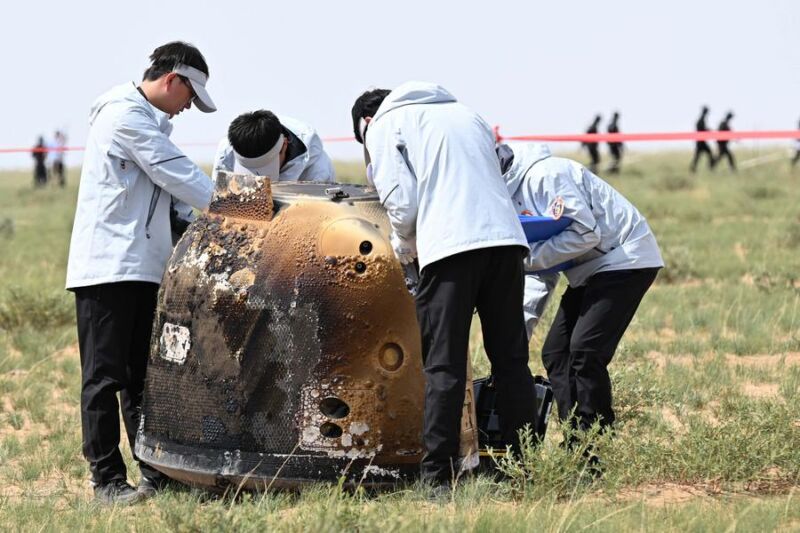
A small spacecraft landed in Inner Mongolia on Tuesday, bringing samples from the far side of the Moon back to Earth.
This was not China's first robotic mission to return a few pounds of dust and pebbles from the lunar surface—that came with the Chang'e 5 mission in December 2020. However, this was the first time any space program in the world returned material from the Moon's far side.
The successful conclusion of this mission, which launched from Earth nearly two months ago, marked another significant achievement for China's space program as the country sets its sights on landing humans on the Moon by the year 2030.
Answering scientific questions
Consisting of an orbiter, a lander, an ascent vehicle, and a return spacecraft, this complex mission launched on May 3. Although the Chang'e 6 mission consisted of similar elements to the Chang'e 5 lunar return mission three and a half years ago, the challenge of operating on the far side of the Moon is that there is no line-of-sight communications with Earth. This necessitated the launch and operation of a relay spacecraft.
Scientists are greatly intrigued by the opportunity to study the far side of the lunar surface, which varies significantly from the near side in terms of the thickness of the crust, volcanic activity, and its composition.
"The CE-6 samples, being the first obtained from the far side of the Moon, are expected to answer one of the most fundamental scientific questions in lunar science research: what geologic activity is responsible for the differences between the two sides?" said Zongyu Yue, a geologist at the Chinese Academy of Sciences, recently.
The race is on
Beyond scientific inquiry, however, the mission has significance for the emerging race between China and the United States to build international coalitions to explore and, eventually, build outposts on the surface of the Moon. With the Chang'e program, which will next turn its attention to the south pole of the Moon, China has established both the seriousness of its intent and validated its technical approach.
It is a huge leap, of course, to move from small robotic missions to human landings. But China has also recently test fired the core stage of the rocket, the Long March 10, that will land humans on the Moon. It is also working on a spacecraft and lunar lander similar in scope to what NASA did with the Apollo program in the 1960s and 1970s.
Whereas China has taken a 100 percent government-led approach to returning to the Moon, NASA is working extensively with commercial partners such as SpaceX and Axiom Space to develop a lunar lander and spacesuits for its Artemis program. This process leads to more uncertainty, but NASA's hope is that working with private companies will ultimately lower the cost of lunar exploration and make its deep-space program more sustainable in the long run.
The race—especially as China stacks up successful milestones like returning samples from the far side of the Moon—is definitely on.



3175x175(CURRENT).thumb.jpg.b05acc060982b36f5891ba728e6d953c.jpg)
Recommended Comments
There are no comments to display.
Join the conversation
You can post now and register later. If you have an account, sign in now to post with your account.
Note: Your post will require moderator approval before it will be visible.